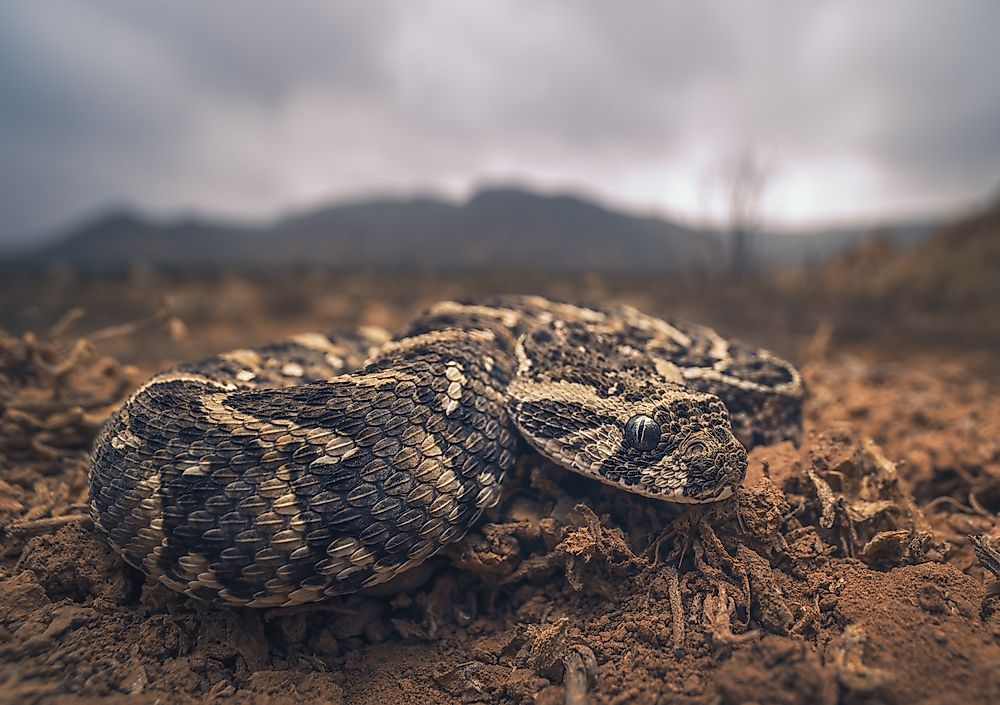Native Reptiles Of Ethiopia

Ethiopia’s savannah grasslands, scrublands, and mountainous areas are home to a rich biodiversity of endemic reptiles. The country is home to a broad range of reptile species and they are among the most vibrant and unique in the world. However, human activities such as civil wars, hunting, poaching, pollution, and interference with natural habitats have led to the rapid decline of these species. Coupled with climatic change, the chances of these native reptiles being endangered or extinct are on a high.
Native Reptiles Of Ethiopia
Abyssinian House Snake (Lamprophis abyssinicus)
The Abyssinian House Snake is endemic to Ethiopia. The snake has a body length of 20-30 inches, and a tawny-brown color with brown or black stripes. The snake is nocturnal and feeds on small mammals like lizards, geckos, and rodents. The sexually dimorphic snake reproduces by laying eggs during the breeding season that occurs during the rainy season. The female Abyssinian house snake is relatively larger than the males. The snake occupies habitats such as montane grasslands and shrublands and moist subtropical broadleaf forests in the Afro-tropical regions of Ethiopia.
Ethiopian Mountain Adder (Bitis parviocula)
The venomous Ethiopian mountain adder is endemic to the Bale Mountains and Rift Valley regions of Ethiopia. The habitat of the Ethiopian mountain adder includes forested areas, grasslands, coffee plantations, cleared forests, and around rocky streams. The terrestrial and nocturnal snake grows to a length of 29.6 and 51 inches. The adder’s body is cylindrical with a long and flat triangular head with large nostrils and thin neck. The body color is brown to dark brown with geometrical shapes that are black patterns.
Kenyan Carpet Viper (Echis pyramidum leakeyi)
The Kenyan carpet viper is venomous snake endemic to northern Kenya and Ethiopia. In Ethiopia, the snake occupies the southwestern region of Lake Stephanie. The snake occupies Savannah and lava desert habitats. The Kenya Red carpet viper has a dark colouration with large eyes. Reproduction occurs through laying eggs which are usually in two clutches of about two eggs. Breeding occurs during the rainy season from October to December. The incubation period lasts for 73-78 days. The diet of the carpet viper is composed of rodents and lizards. The Kenyan carpet viper has no recorded threats.
African Puff Adder (Bitis arietans)
The African puff adder is a venomous snake endemic to the savannah grasslands. Males of this species are larger than females. Due to its wide distribution through the African savannah, the adder has no immediate threat. Habitats of the snake are within the rocky terrain. Though the snake is sluggish, it attacks at surprisingly high speeds and depends on camouflage to hide. The diet is composed of small mammals, birds, amphibians, and lizards.
Protection of reptiles
Reptiles of Ethiopia are at risk especially due to habitat loss. The issue has been addressed through the establishment of protected areas such as parks and reserves targeting the general fauna of Ethiopia including reptiles such Schlegel’s beaked blind snake, Adanson’s mud turtle, Egyptian saw-scaled viper and the Awash River house gecko.
Native Reptiles Of Ethiopia
| Native Reptiles of Ethiopia | Scientific Name |
|---|---|
| Abyssinian House Snake | Lamprophis abyssinicus |
| Ethiopian Mountain Adder | Bitis parviocula |
| Kenyan Carpet Viper | Echis pyramidum leakeyi |
| African Puff Adder | Bitis arietans |
| Schlegel's Beaked Blind Snake | Afrotyphlops schlegelii |
| Adanson's Mud Turtle | Pelusios adansonii |
| Egyptian Saw-Scaled Viper | Echis pyramidum |
| Awash River House Gecko | Hemidactylus awashensis |











